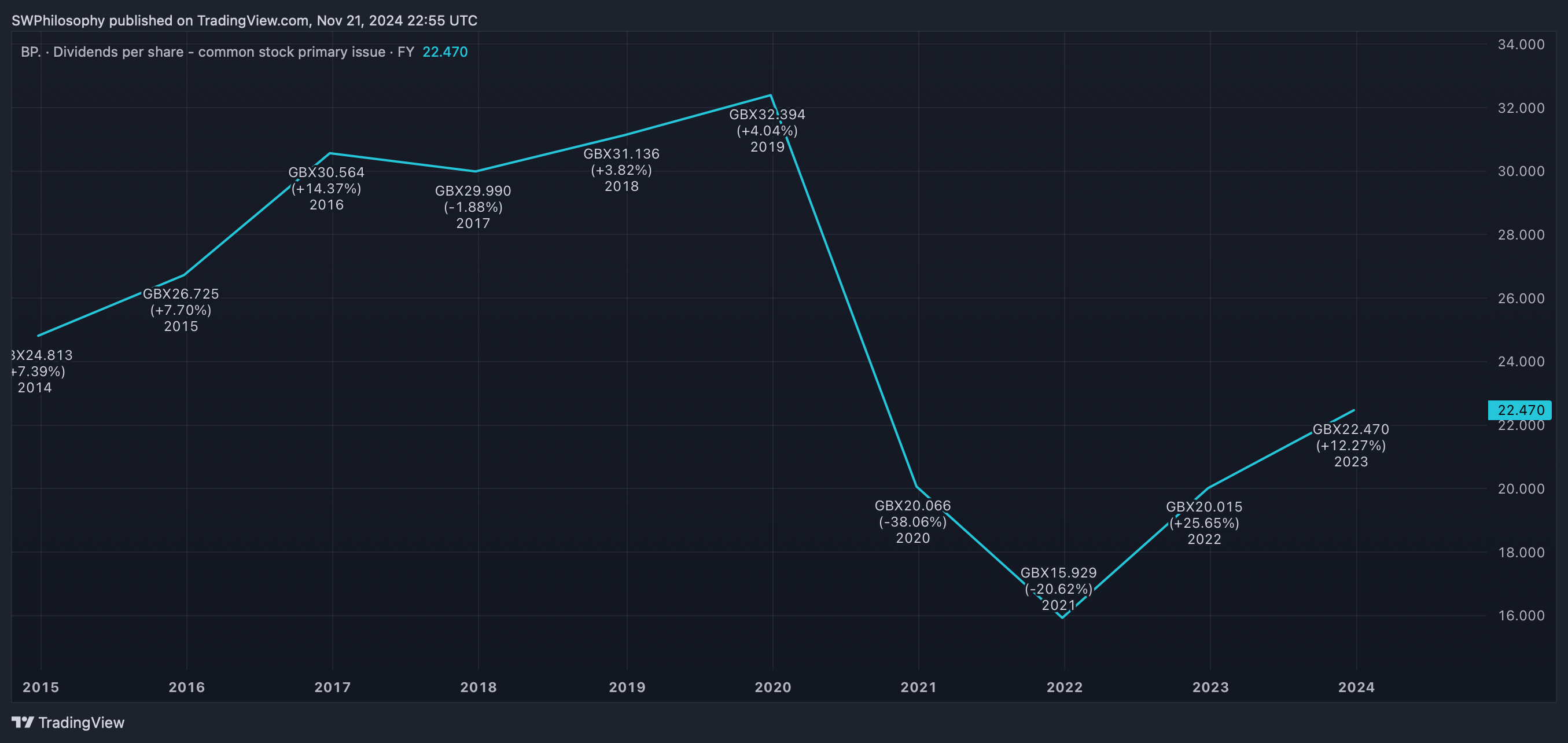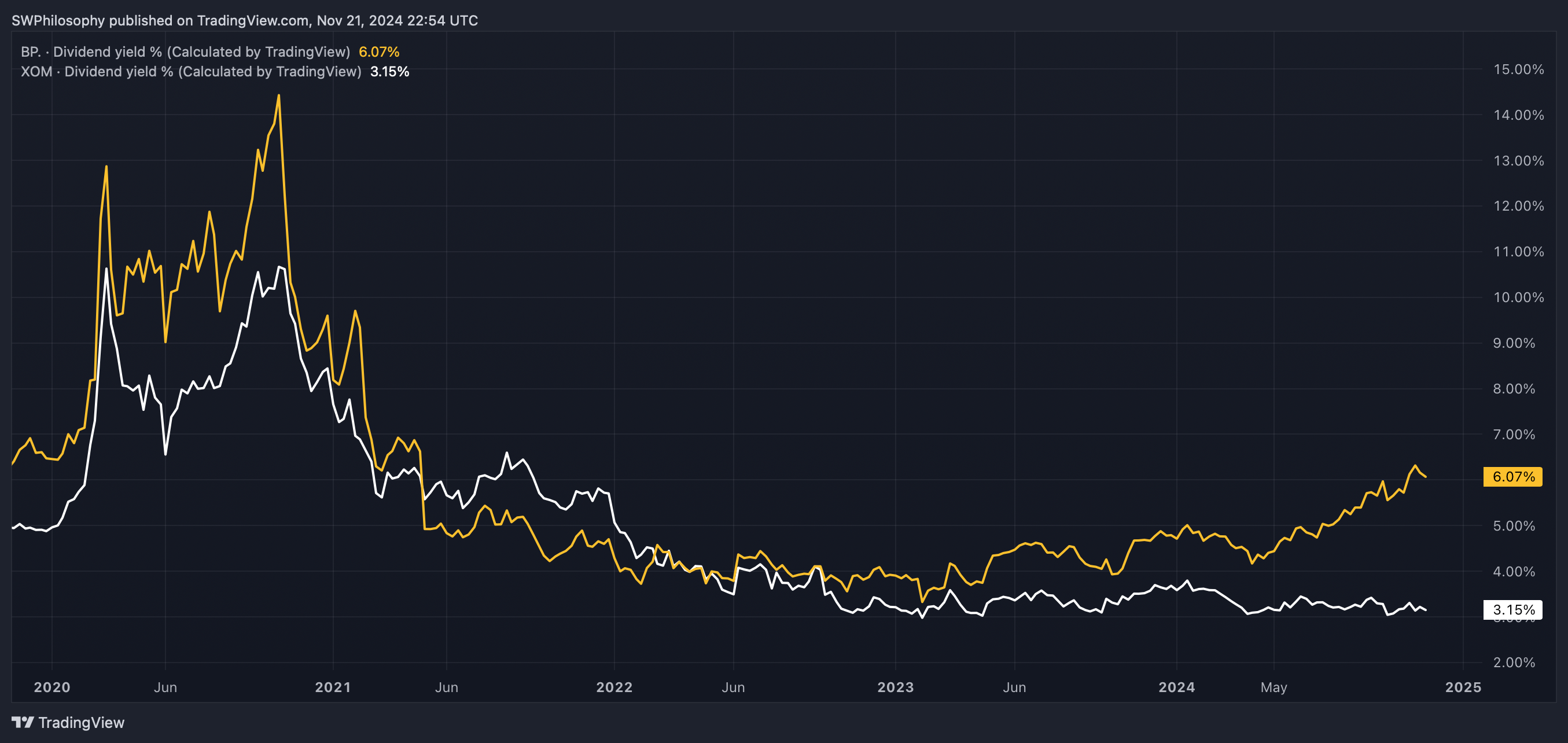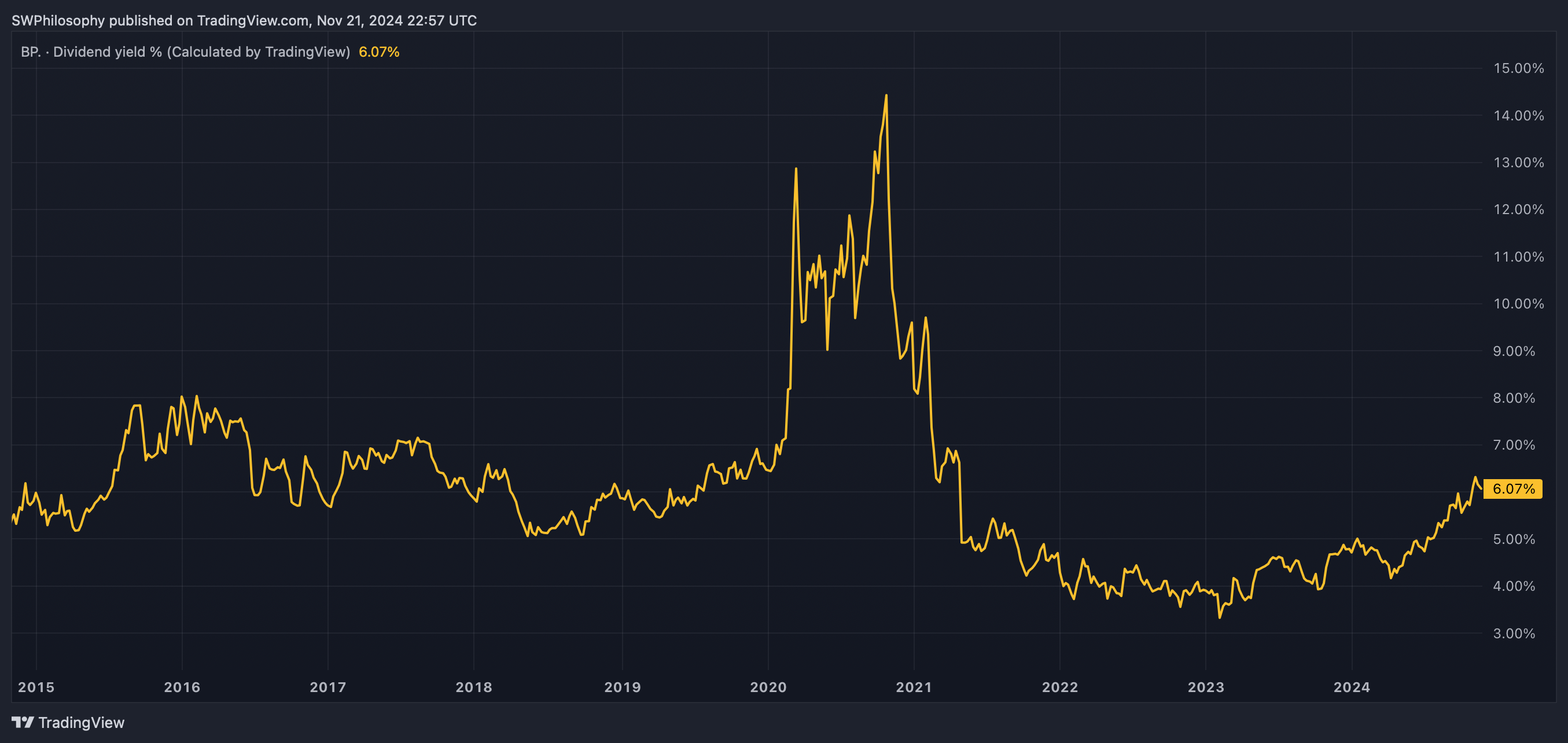The BP (LSE:BP) share price has fallen 17% since the start of the year. That might be a sign for investors that now is a good time to consider buying shares.
In valuation terms, there’s plenty for investors to like and the stock looks unusually cheap. But there’s a lot more to investing in an oil company than just looking at what the charts say.
What the charts say
The falling share price has put BP stock in interesting territory. First off, there’s a dividend yield above 6%, which is the highest it’s been in a while.
BP dividend yield 2015-24
Created at TradingView
The only time the stock has offered this kind of return in the last 10 years was in 2020. But that wasn’t a particularly great time to be buying it.
Oil prices had just turned negative and BP’s dividend was about to get cut. It still hasn’t fully recovered to its pre-pandemic levels, so investors were probably right to be wary.
BP dividends per share 2015-24

Created at TradingView
Things don’t look quite the same this time out. Oil production might well be about to increase, but I don’t think this is about to cause the price to go negative in the near future.
What the charts don’t say
The charts indicate that BP shares look unusually attractive from a passive income perspective. But they don’t show some of the key risks the company is facing.
The UK government has decided to increase windfall taxes on oil and gas production. At the same time, the US is looking to lower corporate taxes.
That puts BP at a significant disadvantage to some of its US counterparts. And this is something that isn’t reflected in a look at the dividend yield or the company’s historic valuation metrics.
This is a significant issue. The biggest competitive asset an oil company can have is a cost advantage – and production just got much more expensive for BP.
One last chart: is it worth it?
BP shares are trading with an unusually high dividend yield, but the firm’s position relative to its US rivals just got weaker. The big question for investors is whether the discount is enough.
Comparing the stock with one of the US oil majors might be a useful way to think about things. ExxonMobil, which primarily operates in the Permian Basin, is a decent example.
BP vs. ExxonMobil dividend yield 2019-24

Created at TradingView
The difference is a 6.07% dividend yield against 3.15% (not including a potential withholding tax). And it’s worth noting that this the widest the difference has been in the last five years.
Whether or not this is enough to offset the risks is too close for me to call. But investors with an optimistic view on oil prices might well think this is an attractive opportunity to consider.
A stock at a discount?
The charts indicate that BP shares are historically cheap. The dividend yield is unusually high and the discount to ExxonMobil is wider than it has been in the last five years.
What the charts don’t say, however, is what a higher windfall tax will mean for the business. And this is the big issue that’s enough to put me off the stock at the moment.
This post was originally published on Motley Fool







